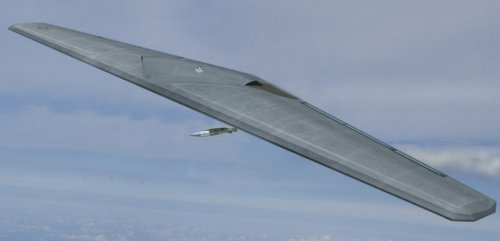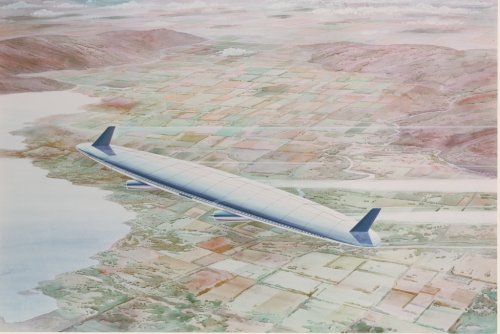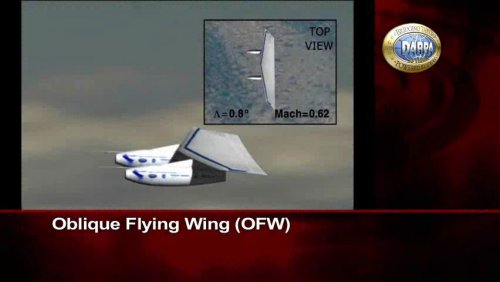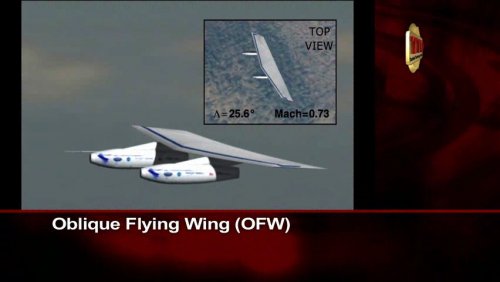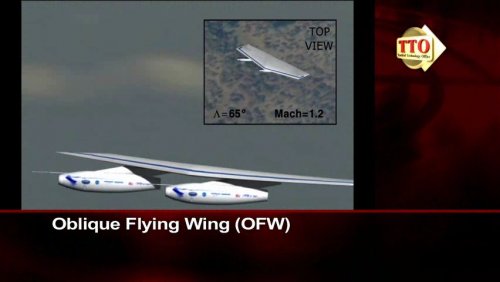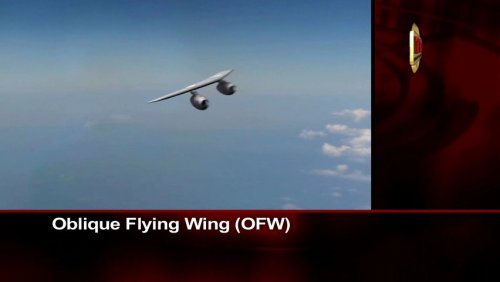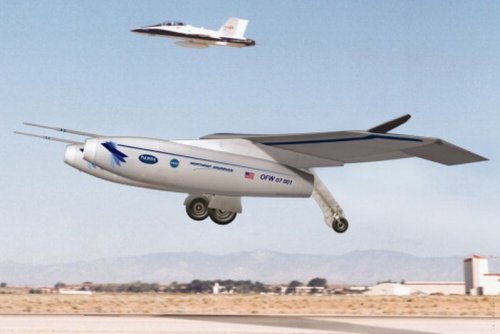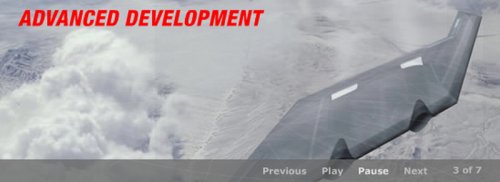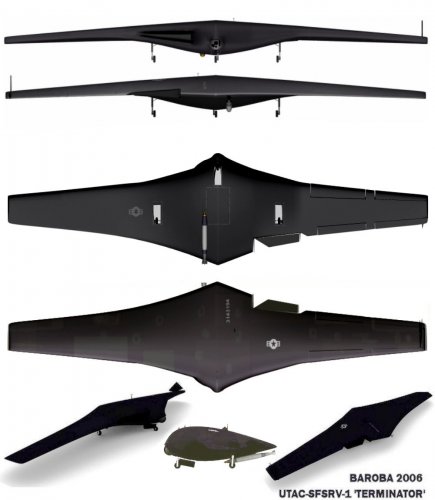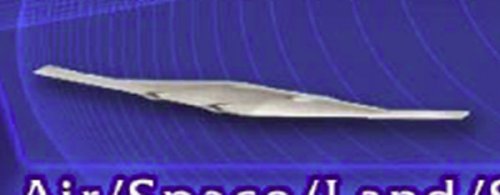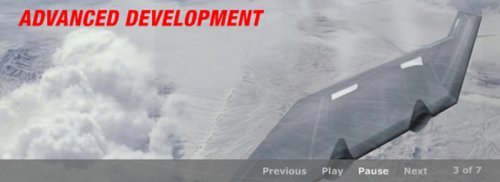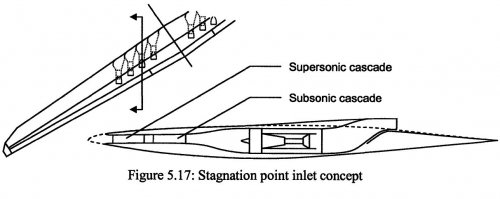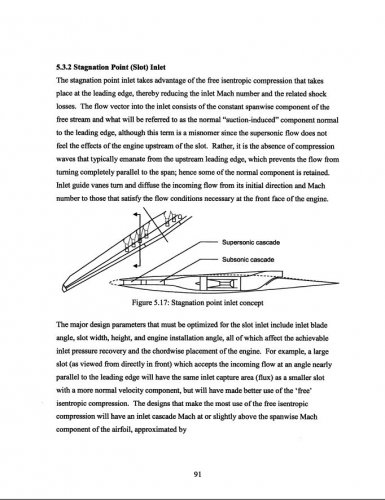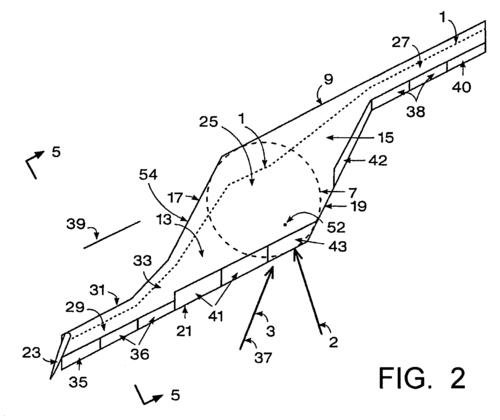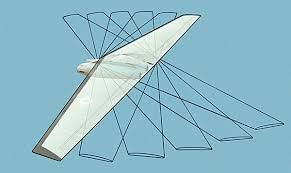Northrop Grumman tests oblique flying wing X-plan in windtunnel
Flight International 10/09/2007
Northrop Grumman is beginning high-speed windtunnel testing of the oblique flying wing
X-plane it is designing for the US Defense Advanced Research Projects Agency. If built,
the OFW technology demonstrator will be the first supersonic, tailless, variable-sweep
flying wing.
The high-fidelity model will be tested at speeds up to Mach 1.3 in a tunnel at Calspan in
Buffalo, New York as a step toward possible flight tests of the unmanned demonstrator
around 2011. Low-speed windtunnel testing was conducted in January, achieving
"excellent correlation" with computational fluid dynamics analyses, says programme
manager Joe Pawlowski.
Northrop is working under a 25-month contract, awarded in March last year, to complete
preliminary design of the X-plane. The preliminary design review is planned for Mach
2008, leading to a decision whether to proceed into Phase 2 and construction and flight
test of the subscale demonstrator.
Studied since the 1950s, the variable-sweep oblique flying wing promises aerodynamic
efficiency at both low and high speeds, but poses challenges with aeroelasticity and
controllability. The goal of the X-plane is to prove the OFW concept is feasible, but not
to characterise its performance, says chief engineer Gary Tiebens.
Previous oblique wing aircraft have all been subsonic - and tailed - and the X-plane is
focused on proving that a tailless OFW can transition to supersonic speed. The benefit
of a variable-sweep oblique flying wing is that airflow normal to the leading edge stays
subsonic, keeping the drag rise low as the aircraft goes supersonic.
The flying wing has a span of 17m (56ft) unswept and sweeps between 0º and 65º,
measured at the trailing edge. The X-plane will take off and land with the wing at 0º, the
sweep increasing linearly with speed until it reaches 65º before going transonic. "It will
be fully swept before the transition, to reduce risk," says Tiebens.
The X-plane is powered by two General Electric J85-21 afterburning engines (from
Northrop's F-5E). In a change to the original design the previously paired engines are
now in separate pods, one moving forward and one aft as the wing sweeps, to improve
area ruling and reduce wave drag at the design maximum speed of M1.2.
The demonstrator has "taildragger" landing gear, with the main gear mounted forward
between the engine nacelles and a castoring tailwheel, says Tiebens. The nacelles and
flight control surfaces embedded in the wing and along the trailing edge are all
electrically driven.
Sweep is varied aerodynamically by yawing the wing using the outermost control
surfaces - "like a rudder kick to produce sideslip", says Tiebens - then retrimming in all
axes to maintain the yawed condition. The engine nacelles rotate to face into the
airflow. "They do not rotate fast enough to use as a control device," he says.
Aeroservoelasticity - the interaction of aerodynamic, structural and control responses -
is the "Achilles heel" of the OFW, says Tiebens. All three axes - pitch, roll and yaw - are
coupled and wing bending caused by manoeuvres or gusts effects stability in all three.
The flight control system must be able to decouple the responses.
The configuration's assymetry, its sensitivity to roll moment and the coupling of roll and
pitch instability at high oblique sweep angles are among the factors the control system
has to alleviate. But the demonstrator's instability is within the range of Northrop's
experience with the B-2, Tiebens says.
"The X-plane is not performance-driven. The big push is the control algorithms," says
Pawlowski. "The objective is to open up the design space for future aircraft. We want to
prove we can fly a tailless, supersonic oblique flying wing with subsonic leading edge
and address the aeroservoelastics."
A future operational OFW, envisioned for beyond 2025, could combine efficient
subsonic loiter and supersonic dash capability to perform military reconnaissance and
strike missions requiring rapid deployment, long range and long endurance, DARPA
believes.

